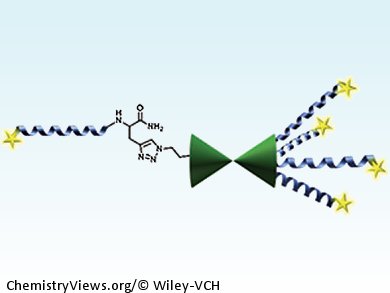A peptidodendrimeric scaffold that has the potential to be used as a cellular delivery platform has been developed by Marcus Weck, Stefania Galdiero, and colleagues, New York University, USA, and Università di Napoli, Italy. The dendrimer is able to enter cells due to the attachment of the membrane-interacting gH625 peptide at the termini.
The peptide is able to form a transient helical structure that temporarily affects membrane organization, facilitating insertion into the membrane by a passive translocation mechanism. This allows the cargo to be released directly into the intracellular matrix as opposed to being trapped in endosomes, from which the cargo might not be able to escape before lysosomal degradation.
This peptidodendrimeric scaffold may be a useful delivery vehicle for therapeutics.
- Dendrimer Functionalization with a Membrane-Interacting Domain of Herpes Simplex Virus Type 1: Towards Intracellular Delivery,
T. P. Carberry, R. Tarallo, A. Falanga, E. Finamore, M. Galdiero, M. Weck, S. Galdiero,
Chem. Eur. J. 2012.
DOI:10.1002/chem.201202358





ncie to see Peptidodendrimers.